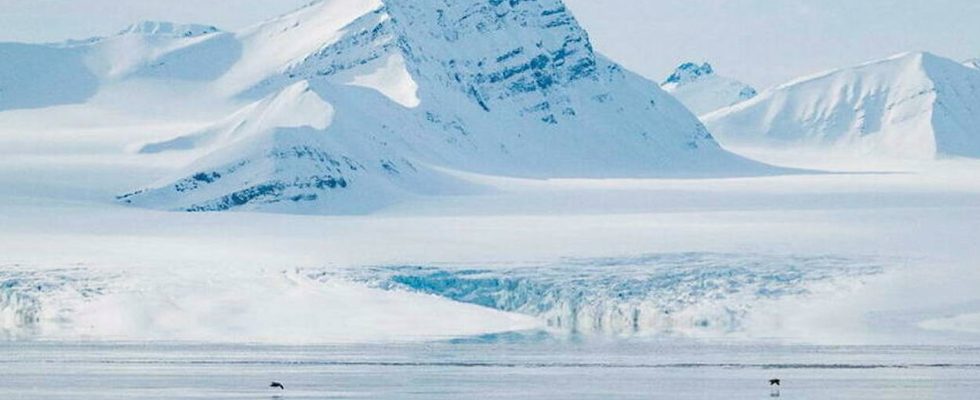Eight scientists will try to save centuries of climatic and environmental data from global warming to preserve them.
By VD with AFP
© JONATHAN NACKSTRAND / AFP
Published on
Subscriber-only audio playback
Desearchers will set off on Tuesday to drill the ice of the Arctic archipelago of Svalbard in a race against time to save centuries of climate and environmental data from global warming and sanctuary it in Antarctica for posterity. “Glaciers at high latitudes, like those in the Arctic, have begun to melt at high speed. We want to recover and preserve, for future generations of scientists, these extraordinary records of our planet’s climate before all the information they contain is completely lost,” said Carlo Barbante, director of the Council’s Institute of Polar Sciences. National Research Institute and Vice President of the Ice Memory Foundation.
The eight scientists from France, Italy and Norway, a drilling specialist and a mountain guide will bring back two ice cores 125 meters long and about ten centimeters in diameter. One will soon be analyzed and the other kept in Antarctica for future generations, following a real challenge to cold chain logistics. Greenhouse gas emissions from human activities have since the 19th century warmed the planet by an average of 1.1 degrees. According to studies, the Arctic is warming two to four times faster than average.
” Responsibility “
The glaciological community “today sees its raw material disappear forever from the surface of the planet. Our responsibility as glaciologists of this generation is to make sure to preserve a little bit of it, ”Ice Memory president Jérôme Chappellaz told AFP on Monday. A study published in January in the prestigious journal Science estimates that half of the approximately 215,000 glaciers on Earth, especially the smallest of them, are doomed to disappear by the end of the century because of climate change, while adding that limiting global warming as much as possible planet could still save others.
READ ALSOBiodiversity: “In Antarctica too, we are approaching the breaking point”
The Svalbard team set up camp at 1,100 meters above sea level in the endless whiteness of the Holtedahlfonna ice field, dotted with perilous crevasses and traversed here and there by polar bears. There, in temperatures fluctuating between -25°C and -5°C, she will work for about twenty days, patiently harvesting and carefully grading precious translucent cylinders.
The sections will travel by boat to Brest then by land to the scientific centers of Grenoble and Venice. Those of the second carrot, intended for posterity and carrying in their strata and bubbles of air 300 years of history of the climate, the environment, pollution, will then leave again by sea towards the Franco- Italian ship Concordia in Antarctica.
Pamirs and Mera Peak
A snow cave has been prepared to accommodate them in 2024-2025 and store them with other core samples collected around the world, at a natural temperature of around -50°C on average. The advantages: no risk of being the victim of a power failure, a place difficult to access and protected by the Antarctic Treaty of 1959, making the dangers of a conflict or a terrorist act unlikely , provides the foundation. Will they be destroyed forever if humanity eventually decides to analyze them? “Our bet for the future is that more and more ice analysis methods will be non-destructive,” says Mr. Chappellaz, referring in particular to the current development of optical methods.
Among the next drilling destinations, he cites the Pamirs in Tajikistan and Mera Peak in the Himalayas. Launched in 2015, the Franco-Italian initiative Ice Memory has already sampled in the Alps, the Andes, the Caucasus, the Altai and intends to do so in all on twenty sites for twenty years. The Svalbard mission with an overall budget of 700,000 euros is financed by the Italian Ministry of University and Research, the participating scientific institutions and the Ice Memory Foundation, itself financed by sponsorship, specifies the Foundation.
